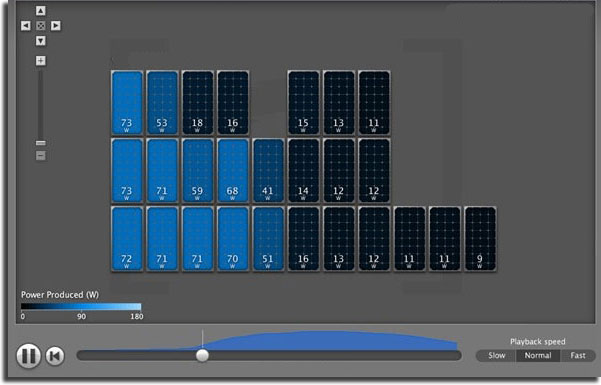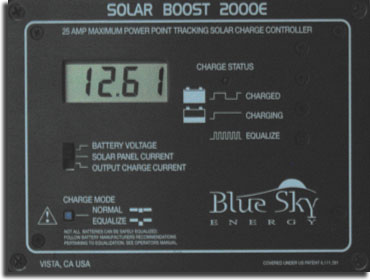 |
Solar Power System Monitoring
Even though photovoltaic systems are extremely reliable once installed by a reputable contractor, and are virtually maintenance free, being able to monitor system performance in detail is still exciting for most home owners. You can keep track of how your system is performing, how much money your saving in electricity costs, and how much your system is benefiting the environment.
There are basically four levels of monitoring. Each of these levels are described below.
Level 1 - Basic Inverter Panel Monitoring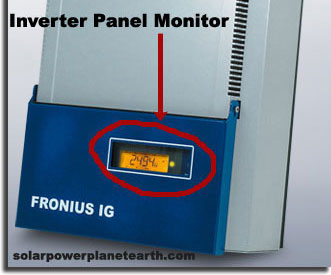
Most inverters come with a front panel monitor which usually gives you the following information:
This is the most basic of information, but can already give you a good idea on how your system is performing. An example of a Fronius inverter front panel is shown to the right.
Level 2 - Remote Panel Monitoring
A significant number of inverter manufactures also make remote panels available to the end user, as an extra option, to monitor system performance in greater detail and from the comfort of any location inside your home or business. These panels are sometimes hardwired, and sometimes wireless, but either way they can usually be installed anywhere in your home or business. Here are the typical features available in a remote monitoring panel:
Here is an example of a remote monitoring panel from Xantrex, and a screen shot of what you might see:
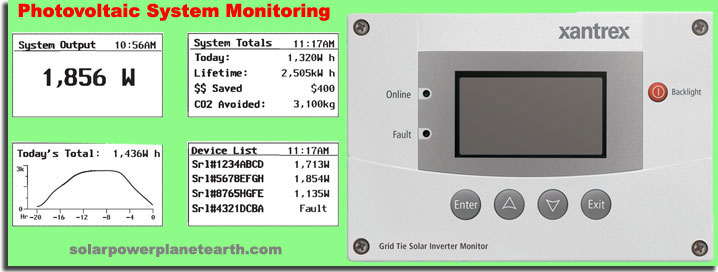
Web Monitoring
Some inverters come with the option of either purchasing a peripheral networking device, or have a built in network communication ability, either through a LAN or wireless connection. The web based monitoring occasionally comes with a yearly subscription fee depending on the manufacturer. Here are some of the typical features of a web based monitoring system:
The following graphic shows a Yahoo based widget from Xantrex:
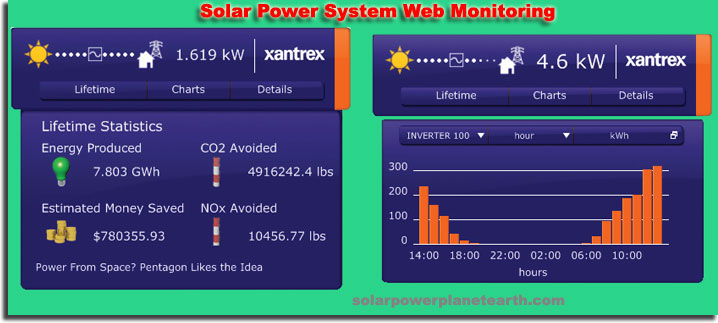
Web based systems are also offered by 3rd party vendors, but it usually makes more sense economically to purchase the inverter manufacturer's web application and associated hardware.
Web Based Monitoring of INDIVIDUAL PANEL Performance!
With traditional single point inverters, which use one inverter to invert your entire solar array, there is no way to monitor the individual performance of each panel. The latest technology, micro inverters, makes this feasible. The solar manufacturer Enphase, has created a micro inverter system, that utilizes mini inverters behind each one of your photovoltaic panels. Each of these inverters inverts the DC from each panel individually, and records data from it at the same time. This data is sent over the AC power lines, meaning no extra data cables are needed coming from the inverters! You then plug in Enphase's network box into any AC outlet in your house, where is picks up the data coming from the inverters, and sends it to their proprietary website for you to log into and monitor your system.
Enphase's graphical user interface shows your exact panel layout on your roof, and uses color changing to indicate different levels of power output from each panel. Not only can you see historical data, Enphase's website creates a time lapse of your panels power output with these changing colors! There is a good chance that micro inverters will play a big role in the future of solar power due to the number of advantages they give. Solar Power for Planet Earth.com recommends you have Solar Source install a micro inverter system if you are considering solar for your home or business. Make sure you read more on all the advantages of micro inverters. Here is a sample screen shot from Enphase's web interface:
